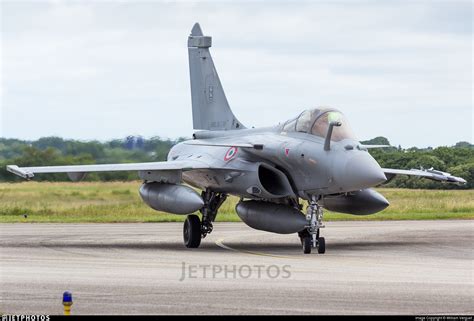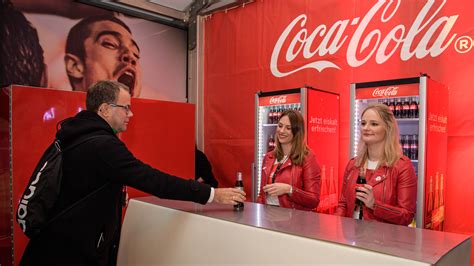
Rafale fighter jets are poised to significantly extend their operational range with the reintroduction of conformal fuel tanks (CFTs), a move that enhances the aircraft’s endurance and payload capacity. The CFTs, which hug the fuselage of the aircraft, allow the Rafale to carry substantially more fuel without sacrificing hardpoints for weapons or external fuel tanks, thereby boosting its mission effectiveness.
The reemergence of CFTs on the Rafale, first revealed in concept form years ago, marks a strategic upgrade for the multirole fighter, addressing a critical need for extended range in modern combat scenarios. These tanks provide an additional fuel load, enabling the Rafale to fly farther and remain airborne longer, a crucial advantage in long-range strike missions, aerial patrols, and reconnaissance operations. “The Rafale has reemerged with conformal fuel tanks,” signaling a renewed focus on enhancing the aircraft’s capabilities for a wider range of missions, particularly those requiring increased endurance, according to sources familiar with the development.
The deployment of CFTs represents a notable enhancement to the Rafale’s already impressive capabilities. Unlike traditional underwing fuel tanks, CFTs are designed to minimize drag, preserving the aircraft’s aerodynamic performance. This is a significant advantage, as it allows the Rafale to maintain its speed, maneuverability, and combat effectiveness while carrying a larger fuel load. The tanks are integrated seamlessly into the aircraft’s design, maintaining its sleek profile and minimizing any adverse impact on its flight characteristics.
The added fuel capacity translates directly into increased mission flexibility. With CFTs, the Rafale can now undertake longer-range missions without the need for frequent refueling, reducing its reliance on tanker support and expanding its operational reach. This is particularly important in regions where air-to-air refueling assets may be limited or unavailable. The extended range also allows the Rafale to loiter longer in a designated area, providing persistent surveillance or close air support to ground forces.
The introduction of CFTs is not just about increasing fuel capacity; it also frees up valuable hardpoints for additional weapons or sensors. By carrying fuel in the conformal tanks, the Rafale can retain its full complement of air-to-air missiles, air-to-ground munitions, and targeting pods, maximizing its combat potential. This is a critical advantage in modern warfare, where the ability to carry a diverse array of weapons is essential for dealing with a wide range of threats.
“The tanks allow for more fuel without sacrificing hardpoints,” highlighting a key benefit of the CFT design, which is to maintain the aircraft’s multirole capabilities while extending its range. This means the Rafale can continue to perform a variety of missions, from air superiority to ground attack, without compromising its payload capacity.
The development and integration of CFTs for the Rafale reflect a broader trend in military aviation toward enhancing the range and endurance of combat aircraft. As modern warfare becomes increasingly globalized, the ability to project power over long distances is becoming ever more important. CFTs are one way of achieving this, providing a cost-effective and efficient means of extending the operational reach of existing aircraft.
The impact of CFTs on the Rafale’s operational capabilities extends beyond just increased range and payload capacity. The added fuel also enhances the aircraft’s survivability by reducing its reliance on aerial refueling. Aerial refueling operations can be risky, particularly in contested airspace, and reducing the need for these operations minimizes the aircraft’s exposure to potential threats. The Rafale can now operate more independently and for longer periods, making it a more resilient and versatile asset.
The reintroduction of CFTs on the Rafale is likely to be welcomed by air forces around the world that operate the aircraft. The added range and payload capacity will make the Rafale an even more attractive option for countries seeking a capable and versatile multirole fighter. The upgrade also demonstrates the Rafale’s continued evolution and its ability to adapt to changing operational requirements.
The Rafale has already proven itself to be a highly capable combat aircraft, and the addition of CFTs will only enhance its reputation. With its advanced sensors, powerful weapons, and now extended range, the Rafale is well-positioned to meet the challenges of modern warfare. The reemergence of the Rafale with conformal fuel tanks marks a significant milestone in the aircraft’s development and underscores its continued relevance in the 21st century.
Furthermore, the integration of CFTs into the Rafale platform showcases the continuous innovation and adaptation within the aerospace industry. This enhancement not only extends the operational capabilities of the aircraft but also ensures its relevance in evolving threat landscapes. The ability to quickly adapt and incorporate new technologies is crucial for maintaining a competitive edge in modern military aviation.
The adoption of CFTs on the Rafale can be seen as a strategic move to enhance its market appeal in the international arms market. Countries seeking advanced and versatile fighter jets are likely to be drawn to the Rafale’s enhanced range and payload capabilities. This upgrade could lead to increased sales and further solidify the Rafale’s position as one of the leading multirole fighters in the world.
The reemergence of the Rafale with conformal fuel tanks is a testament to the aircraft’s enduring design and its ability to be continuously upgraded and improved. The Rafale has proven itself to be a versatile and capable platform, and the addition of CFTs will only enhance its capabilities further. As the global security landscape continues to evolve, the Rafale remains a relevant and effective tool for maintaining peace and security.
The impact of CFTs on the Rafale’s logistics and maintenance should also be considered. While the tanks are designed to be integrated seamlessly into the aircraft, they will undoubtedly require additional maintenance and support. Air forces operating the Rafale will need to ensure that they have the necessary training and equipment to maintain the CFTs effectively. However, the benefits of increased range and payload capacity are likely to outweigh any additional logistical challenges.
In conclusion, the reintroduction of conformal fuel tanks on the Rafale represents a significant enhancement to the aircraft’s capabilities. The added range, payload capacity, and reduced reliance on aerial refueling will make the Rafale an even more versatile and effective combat platform. This upgrade underscores the Rafale’s continued evolution and its ability to adapt to the changing demands of modern warfare. The reemergence of the Rafale with CFTs is a testament to the aircraft’s enduring design and its continued relevance in the 21st century.
Frequently Asked Questions (FAQ)
-
What are Conformal Fuel Tanks (CFTs)?
Conformal Fuel Tanks (CFTs) are external fuel tanks designed to fit closely to the fuselage of an aircraft, conforming to its shape. This design minimizes drag compared to traditional underwing fuel tanks, allowing the aircraft to maintain its aerodynamic performance while carrying extra fuel. “The tanks allow for more fuel without sacrificing hardpoints,” according to defense analysts, emphasizing the advantage of CFTs in enhancing mission capabilities. CFTs are typically non-jettisonable and are integrated into the aircraft’s fuel system.
-
How do CFTs benefit the Rafale fighter jet?
CFTs offer several key benefits to the Rafale, including:
- Extended Range: They significantly increase the Rafale’s operational range, enabling it to fly farther and remain airborne longer.
- Increased Payload: By carrying fuel in CFTs, the Rafale can retain its hardpoints for carrying weapons, sensors, and other mission-critical equipment.
- Reduced Reliance on Aerial Refueling: The added fuel capacity reduces the need for frequent aerial refueling, enhancing the aircraft’s survivability and operational independence.
- Improved Aerodynamic Performance: CFTs are designed to minimize drag, preserving the Rafale’s speed, maneuverability, and overall aerodynamic performance.
-
How does the reintroduction of CFTs affect the Rafale’s mission capabilities?
The reintroduction of CFTs greatly enhances the Rafale’s mission capabilities. With increased range and payload capacity, the Rafale can perform a wider range of missions, including:
- Long-Range Strike: The extended range allows the Rafale to strike targets at greater distances without requiring frequent refueling.
- Air Superiority: The added fuel capacity enables the Rafale to loiter longer in a designated area, providing persistent air defense coverage.
- Reconnaissance and Surveillance: The increased endurance allows the Rafale to conduct longer reconnaissance and surveillance missions, gathering critical intelligence.
- Close Air Support: The Rafale can provide close air support to ground forces for extended periods, enhancing their effectiveness and survivability.
-
Are CFTs a new concept, and why were they not initially implemented on all Rafale models?
The concept of CFTs is not new; they have been used on other fighter aircraft, such as the F-16 and F-15. While the Rafale design has always had the potential for CFT integration, the initial focus was on developing and fielding the aircraft with its baseline capabilities. The decision to reintroduce CFTs now reflects a strategic effort to enhance the Rafale’s operational capabilities in response to evolving threats and mission requirements. The initial absence could be attributed to various factors, including cost considerations, development priorities, or specific customer requirements.
-
How will the integration of CFTs impact the maintenance and logistics of the Rafale fleet?
The integration of CFTs will undoubtedly have some impact on the maintenance and logistics of the Rafale fleet. Air forces operating the Rafale will need to:
- Train Maintenance Personnel: Maintenance personnel will need to be trained on the proper procedures for inspecting, maintaining, and repairing the CFTs.
- Acquire Specialized Tools and Equipment: Specialized tools and equipment may be required to support the maintenance of the CFTs.
- Update Maintenance Manuals and Procedures: Maintenance manuals and procedures will need to be updated to reflect the addition of CFTs.
- Manage Spare Parts Inventory: An adequate inventory of spare parts for the CFTs will need to be maintained to ensure timely repairs and minimize downtime. While these logistical challenges are significant, the benefits of increased range and payload capacity are likely to outweigh any additional maintenance burden.
-
Which countries currently operating the Rafale are most likely to adopt this upgrade, and why?
Countries facing significant territorial challenges or those requiring long-range strike capabilities are most likely to adopt the CFT upgrade for their Rafale fleets. These might include:
- India: Given its extensive borders and strategic interests in the Indo-Pacific region, India could greatly benefit from the enhanced range and payload capacity offered by CFTs. The Indian Air Force operates a significant number of Rafale aircraft and has a need for long-range strike and air superiority capabilities.
- France: As the Rafale’s country of origin, France is likely to adopt the upgrade to maintain its air force’s cutting-edge capabilities and to support its overseas operations. The French Air Force often conducts missions in Africa and the Middle East, where extended range is crucial.
- Egypt: With regional security concerns and a need for long-range strike capabilities, Egypt could also be a potential adopter of the CFT upgrade.
- Qatar: Despite its small size, Qatar has invested heavily in advanced military technology, including the Rafale. The CFT upgrade would further enhance Qatar’s airpower capabilities.
-
How does this upgrade position the Rafale against its competitors in the international fighter jet market?
The addition of CFTs enhances the Rafale’s competitiveness in the international fighter jet market by addressing a key performance parameter: range. In comparison to competitors like the Eurofighter Typhoon, F-35, and F-15EX, the Rafale with CFTs offers a compelling combination of multirole capabilities, advanced technology, and extended operational reach. This upgrade can be a deciding factor for countries evaluating fighter jet options, particularly those with requirements for long-range strike, maritime patrol, or air superiority missions.
-
What are the potential drawbacks or limitations of using CFTs on the Rafale?
While CFTs offer significant advantages, there are potential drawbacks and limitations to consider:
- Increased Weight: The added weight of the CFTs and the additional fuel can slightly reduce the aircraft’s acceleration and climb rate.
- Aerodynamic Effects: Although designed to minimize drag, CFTs can still have some impact on the aircraft’s aerodynamic performance, particularly at high speeds and angles of attack.
- Maintenance Requirements: As mentioned earlier, CFTs will require additional maintenance and support, adding to the overall cost of ownership.
- Limited Jettison Capability: Unlike external fuel tanks, CFTs are typically non-jettisonable, which means they cannot be dropped in an emergency situation to reduce weight or drag.
-
How does the reintroduction of CFTs on the Rafale fit into the broader context of military aviation trends?
The reintroduction of CFTs on the Rafale reflects a broader trend in military aviation toward enhancing the range, endurance, and payload capacity of combat aircraft. As modern warfare becomes increasingly globalized, the ability to project power over long distances is becoming ever more important. Other trends include:
- Increased Use of Unmanned Aircraft: Unmanned aircraft are being used increasingly for reconnaissance, surveillance, and strike missions, often operating in conjunction with manned aircraft.
- Development of Hypersonic Weapons: Hypersonic weapons are being developed to strike targets at extremely long ranges with very little warning.
- Emphasis on Network-Centric Warfare: Modern military operations are increasingly reliant on networked communication and data sharing to enhance situational awareness and coordination. The Rafale with CFTs is well-positioned to participate in these trends, providing a versatile and capable platform for a wide range of missions.
-
Are there any potential future upgrades or modifications planned for the Rafale in addition to the CFTs?
The Rafale is a continuously evolving platform, and there are likely to be future upgrades and modifications planned to enhance its capabilities further. These could include:
- Improved Sensors: Upgrades to the radar, electronic warfare systems, and targeting pods could enhance the Rafale’s situational awareness and targeting accuracy.
- Advanced Weapons: Integration of new air-to-air missiles, air-to-ground munitions, and precision-guided weapons could expand the Rafale’s combat capabilities.
- Enhanced Data Links: Upgrades to the data links could improve the Rafale’s ability to communicate and share data with other aircraft, ground stations, and naval vessels.
- Artificial Intelligence and Automation: Integration of AI and automation technologies could reduce pilot workload and enhance the Rafale’s autonomous capabilities. The Rafale’s modular design allows for these upgrades to be implemented relatively easily, ensuring that the aircraft remains at the forefront of military aviation technology.
-
What is the estimated increase in range and/or endurance that the CFTs provide for the Rafale?
While precise figures on the increased range and endurance provided by the CFTs may be classified or proprietary, industry experts estimate that the CFTs can increase the Rafale’s range by 40-50%. This translates to several hundred additional kilometers of range, allowing the aircraft to operate much farther from its base or carrier. The increased endurance would also allow the Rafale to remain airborne for several hours longer, depending on the mission profile. These improvements significantly enhance the Rafale’s operational flexibility and effectiveness.
-
How does the integration of CFTs affect the Rafale’s stealth characteristics (if any)?
While the Rafale is not considered a stealth aircraft in the same category as the F-22 or F-35, it does incorporate some features to reduce its radar cross-section. The integration of CFTs could potentially affect the Rafale’s stealth characteristics, depending on the design and materials used in the tanks. However, it is likely that the CFTs have been designed to minimize any adverse impact on the aircraft’s radar signature. The benefits of increased range and payload capacity are likely to outweigh any minor compromise in stealth performance.
-
Can the CFTs be easily removed or swapped out depending on mission requirements?
The design of CFTs generally involves a more permanent integration with the aircraft’s structure compared to external fuel tanks. While not designed for frequent removal and re-attachment, the CFTs can be removed for maintenance or specific operational requirements. This process typically requires specialized equipment and trained personnel. The decision to equip the Rafale with or without CFTs would likely be made based on the overall mission profile and the specific needs of the operator.
-
What is the cost associated with retrofitting existing Rafale aircraft with CFTs?
The cost of retrofitting existing Rafale aircraft with CFTs can vary depending on several factors, including the number of aircraft being upgraded, the complexity of the integration process, and any additional modifications that are required. This cost would include the purchase of the CFTs themselves, as well as the labor costs associated with installing them. Aircraft manufacturers and defense contractors typically offer upgrade packages that include all of the necessary hardware, software, and training to support the integration of new capabilities like CFTs. The overall cost would need to be weighed against the benefits of increased range and payload capacity to determine the cost-effectiveness of the upgrade.
-
Are there any environmental considerations associated with the use of CFTs on the Rafale?
The use of CFTs on the Rafale does not directly introduce any new or unique environmental concerns compared to the operation of the aircraft itself. However, the increased fuel capacity associated with CFTs could potentially lead to slightly higher fuel consumption and emissions over the aircraft’s lifespan. The environmental impact of military aviation is a broader issue that is being addressed through the development of more fuel-efficient engines, alternative fuels, and improved air traffic management practices. The benefits of increased operational effectiveness and reduced reliance on aerial refueling may be considered to outweigh any minor increase in environmental impact.









